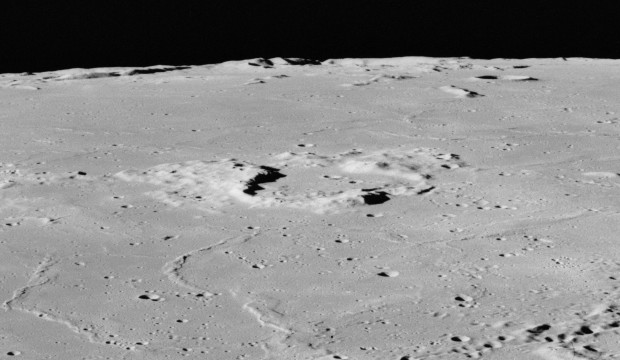Wolf (crater) on:
[Wikipedia]
[Google]
[Amazon]
Wolf is a
 By convention these features are identified on lunar maps by placing the letter on the side of the crater midpoint that is closest to Wolf.
By convention these features are identified on lunar maps by placing the letter on the side of the crater midpoint that is closest to Wolf.
Wolf at The Moon Wiki
Impact craters on the Moon
lunar
Lunar most commonly means "of or relating to the Moon".
Lunar may also refer to:
Arts and entertainment
* ''Lunar'' (series), a series of video games
* "Lunar" (song), by David Guetta
* "Lunar", a song by Priestess from the 2009 album ''Prior t ...
impact crater
An impact crater is a circular depression in the surface of a solid astronomical object formed by the hypervelocity impact of a smaller object. In contrast to volcanic craters, which result from explosion or internal collapse, impact crater ...
that lies in the south-central part of the Mare Nubium
Mare Nubium (Latin ''nūbium'', the "sea of clouds") is a lunar mare in the Nubium basin on the Moon's near side. The mare is located just to the southeast of Oceanus Procellarum.
Formation
The basin containing Mare Nubium is believed to ...
, a lunar mare
The lunar maria (; singular: mare ) are large, dark, basaltic plains on Earth's Moon, formed by ancient asteroid impacts on the far side on the Moon that triggered volcanic activity on the opposite (near) side. They were dubbed , Latin for 'seas' ...
in the southern hemisphere of the Moon
The Moon is Earth's only natural satellite. It is the fifth largest satellite in the Solar System and the largest and most massive relative to its parent planet, with a diameter about one-quarter that of Earth (comparable to the width ...
. It lies to the north-northwest of the walled plain Pitatus, and east-southeast of the prominent crater Bullialdus. It is named after the German astronomer Max Wolf
Maximilian Franz Joseph Cornelius Wolf (21 June 1863 – 3 October 1932) was a German astronomer and a pioneer in the field of astrophotography. He was the chairman of astronomy at the University of Heidelberg and director of the Heidelberg- ...
.
The interior floor of this crater has been completely flooded by lava
Lava is molten or partially molten rock ( magma) that has been expelled from the interior of a terrestrial planet (such as Earth) or a moon onto its surface. Lava may be erupted at a volcano or through a fracture in the crust, on land or ...
, leaving only an irregular, broken rim projecting slightly above the surface. The surviving rim is not quite circular, having outward bulges to the north and west. It rises to a maximum height of about 0.7 km. The smaller crater Wolf B has overlaid the southern rim, and the two have now merged into one formation. Low ridges connect to the exterior rim to the east and south.
Satellite craters
 By convention these features are identified on lunar maps by placing the letter on the side of the crater midpoint that is closest to Wolf.
By convention these features are identified on lunar maps by placing the letter on the side of the crater midpoint that is closest to Wolf.
See also
*827 Wolfiana
827 Wolfiana, provisional designation , is a Florian asteroid from the inner regions of the asteroid belt, approximately 8 kilometers in diameter. It was discovered at Vienna Observatory on 29 August 1916, by Austrian astronomer Johann Palisa, w ...
* 1217 Maximiliana
1217 Maximiliana, provisional designation , is a background asteroid from the inner regions of the asteroid belt, approximately in diameter. It was discovered on 13 March 1932, by Belgian astronomer Eugène Delporte at the Royal Observatory of Be ...
* Mons Wolff
Montes Apenninus are a rugged mountain range on the northern part of the Moon's near side. They are named after the Apennine Mountains in Italy. With their formation dating back about 3.9 billion years, Montes Apenninus are fairly old.
Descri ...
(Montes Apenninus)
References
* * * * * * * * * * *External links
{{CommonscatWolf at The Moon Wiki
Impact craters on the Moon